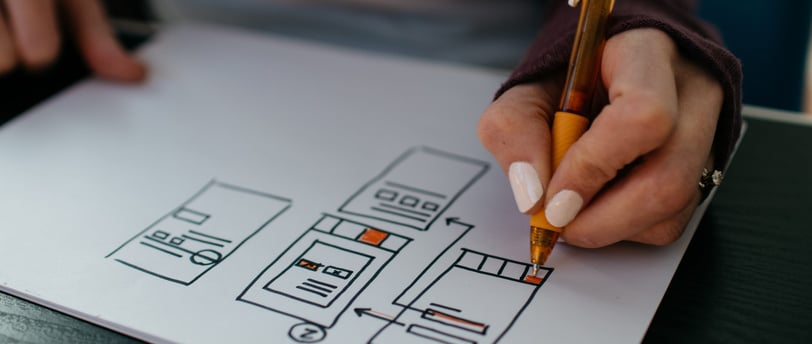Designing for Emotion: How to Create Engaging UX
Hey there, fellow UX designer! Are you tired of creating bland, lifeless user experiences that make your users feel like they’re stuck in a dentist’s waiting room? Well, it’s time to bring in the big guns — emotions!
Amber
2/20/20233 min read


Hey there, fellow UX designer! Are you tired of creating bland, lifeless user experiences that make your users feel like they’re stuck in a dentist’s waiting room? Well, it’s time to bring in the big guns — emotions!
That’s right, folks. Emotions drive behaviour, and if you want your users to engage with your product or service, you need to create an emotional connection with them. In this article, we’ll show you how to incorporate emotional design into your UX process and create engaging experiences that’ll make your users go “Wow!”
Why Emotional Design Matters (And No, It’s Not Just Because We Said So)
Okay, okay, we know that emotions aren’t exactly your typical UX designer’s toolkit. But think about it — why do people buy things? Why do they download apps? Why do they even bother using your website in the first place? It’s because they feel something.
“Create a deeper connection with them, leading to increased engagement, loyalty, and maybe even some word-of-mouth advertising.”
By tapping into your users’ emotions — whether it’s excitement, joy, or trust — you can create a deeper connection with them, leading to increased engagement, loyalty, and maybe even some word-of-mouth advertising. And who doesn’t love a little free advertising, right?
To prove our point, let’s take a look at some examples of brands and products that have successfully leveraged emotional design:
Airbnb — Everyone loves a good adventure right? Airbnb uses stunning photography and storytelling to highlight unique properties, creating an emotional connection with users that goes beyond just booking a place to stay.
Headspace — Meditation can be a bit of a snooze-fest, but Headspace’s playful animations and cheerful colours create a sense of calm and relaxation that makes you want to keep coming back for more. (And we all need a little more calm and relaxation in our lives, amirite?)
Nike — You might not think of a slogan as emotional design, but Nike’s “Just Do It” is a prime example of how to tap into users’ desires for inspiration, motivation, and achievement. So get off that couch and just do it already!
Now, let’s get down to business and talk about how you can incorporate emotional design into your UX process.
Incorporating Emotional Design into Your UX Process (Let’s Get Feely)
Understand your users’ emotions — It’s time to put on your emotional detective hat and figure out what makes your users tick. Conduct user research, and don’t just pay attention to what they say, but how they feel. Use empathy maps and personas to help you understand their motivations, goals, and pain points. And don’t be afraid to ask them how they really feel — we’re all friends here.
Identify emotional touchpoints — Now that you know what makes your users feel all the feels, it’s time to identify the moments in your user journey that have the potential to create an emotional connection. Maybe it’s a welcome message that makes them feel like they’re part of the gang, or a checkout confirmation page that gives them a little victory dance.
Use emotional triggers — No, not the kind that makes your users cry (although, if that’s your thing, we won’t judge). Emotional triggers are design elements that evoke specific emotions in users. For example, using bright colours and bold typography can create a feeling of excitement and energy, while soft, pastel colours and subtle animations can create a feeling of calm and relaxation. Think of it like creating a mood board for your users’ emotions.
Incorporate storytelling — Who doesn’t love a good story? Use storytelling to convey the emotional values and personality of your brand or product. A well-crafted story can help users connect with your product on a deeper level and create a sense of empathy and trust. You can use various storytelling techniques such as user scenarios, animated videos, case studies or even micro-copy to create a consistent narrative and invoke emotions.
Test, iterate, repeat — Like any other design process, emotional design is an iterative process. Don’t be afraid to test your designs with real users and see how they respond emotionally. Use user feedback to refine and tweak your designs, and continue testing until you achieve the desired emotional response.
Conclusion
Emotional design may not be your typical UX toolkit, but it’s a powerful tool that can help you create engaging, memorable experiences that users will love. By understanding your users’ emotions, identifying emotional touchpoints, using emotional triggers, incorporating storytelling, and testing your designs, you can create user experiences that truly resonate and create a lasting emotional connection.
So go forth, dear UX designer, and create with feelings! We promise, your users will thank you for it.
Why not check out this article on Medium
And, if you like it, hit the follow button while you're there to keep up to date with my writing.


CONTACT
+44 0203 818 0987
contact@amberdesign.online
